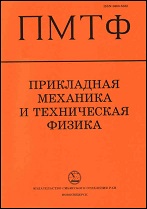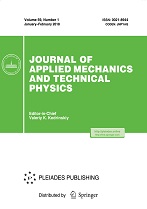|
|
Prikladnaya Mekhanika i Tekhnicheskaya Fizika, 2014, Volume 55, Issue 6, Pages 35–42
(Mi pmtf1005)
|
 |
|
 |
This article is cited in 5 scientific papers (total in 5 papers)
Analysis of flight trajectories of a ramjet-powered vehicle
V. M. Fomina, S. M. Aulchenkoa, V. I. Zvegintseva, L. A. Ustinovb
a Khristianovich Institute of Theoretical and Applied Mechanics, Siberian Branch of the Russian Academy of Sciences, Novosibirsk
b Tula State University, Tula, 300012, Russia
Abstract:
Based on numerical simulations of flight trajectories with ramjet-powered flying vehicles, it is found that all possible flight trajectories can be classified into three groups: ballistic trajectories, trajectories with a horizontal segment, and skipping trajectories. Trajectories of each group can be optimized, for instance, to ensure the maximum flight range under given initial conditions and constraints. Examples of optimal trajectories for a given amount of available fuel are presented as functions of the initial slope of the trajectory, angle of attack of the vehicle, instants of engine actuation, and engine operation time.
Keywords:
ramjet, flight trajectory, optimization.
Received: 30.12.2013
Citation:
V. M. Fomin, S. M. Aulchenko, V. I. Zvegintsev, L. A. Ustinov, “Analysis of flight trajectories of a ramjet-powered vehicle”, Prikl. Mekh. Tekh. Fiz., 55:6 (2014), 35–42; J. Appl. Mech. Tech. Phys., 55:6 (2014), 934–941
Linking options:
https://www.mathnet.ru/eng/pmtf1005 https://www.mathnet.ru/eng/pmtf/v55/i6/p35
|


| Statistics & downloads: |
| Abstract page: | 94 | | Full-text PDF : | 36 |
|





 Contact us:
Contact us: Terms of Use
Terms of Use
 Registration to the website
Registration to the website Logotypes
Logotypes









 Citation in format
Citation in format 
